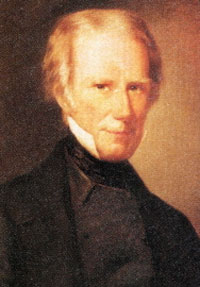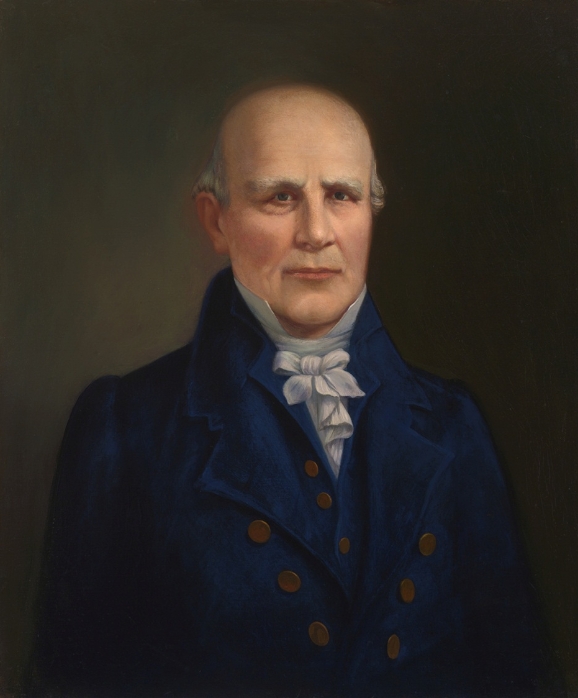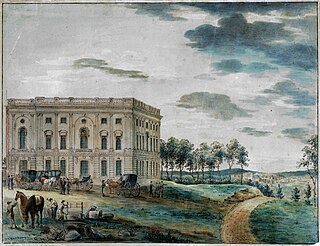
Elections to the United States House of Representatives for the 15th Congress were held in the various states between April 1816 and August 14, 1817. The Congress first met on December 1, 1817.

Elections to the United States House of Representatives for the 14th Congress were held at various dates in each state between April 1814 and August 10, 1815 during James Madison's second term. The Congress's first session began on December 4, 1815.

Elections to the United States House of Representatives for the 12th Congress were held in the various states between April 1810 and August 1811 during James Madison's first term in office. Louisiana elected its first representative in September 1812. Congress assembled on November 4, 1811. The first session witnessed the unprecedented occurrence of a new member, Henry Clay, being elected Speaker of the House. This has happened only once since, in 1860 when William Pennington was elected to the post.

Elections to the United States House of Representatives for the 10th Congress were held at various dates in each state between April 29, 1806 and August 4, 1807 during Thomas Jefferson's second term with the new Congress meeting on October 26, 1807.

Elections to the United States House of Representatives for the 9th Congress were held at various dates in each state between April 24, 1804 and August 5, 1805. The Congress first met on December 2, 1805. The elections occurred at the same time as President Thomas Jefferson's re-election.
The United States Senate elections of 1806 and 1807 were elections that had the Democratic-Republican Party increase its overwhelming control of the Senate by one additional Senator. The Federalists went into the elections with such a small share of Senate seats that even if they had won every election, they would have still remained a minority caucus. As it was, however, they lost one of the two seats they were defending and picked up no gains from their opponents.
The United States Senate elections of 1808 and 1809 were elections that had the Federalist Party gain one seat in the United States Senate, and which coincided with the 1808 presidential election. The Federalists had gone into the elections with such a small share of Senate seats that even if they had won every election, they would have still remained a minority caucus.
The United States Senate elections of 1810 and 1811 were elections that had the Democratic-Republican Party maintain their majority the United States Senate. The minority Federalists had gone into the elections with such a small share of Senate seats that they had won all of the elections, they would still not have controlled a majority.
The United States Senate elections of 1812 and 1813 were elections that, coinciding with President James Madison's re-election, had the Democratic-Republican Party lose two seats but still retain an overwhelming majority in the United States Senate. As in recent elections, the minority Federalists had gone into the elections with such a small share of Senate seats that if they had won every one of the elections, they would still not have controlled a majority.
The United States Senate elections of 1814 and 1815 were elections that had the Democratic-Republican Party lose a seat but still retain an overwhelming majority in the United States Senate. Unlike in recent elections, the minority Federalists had gone into the elections with a chance of regaining their long-lost majority had they swept almost all the seats. However, only one seat switched parties. Two seats held by Democratic-Republicans were left unfilled until long after the next Congress began.
The United States Senate elections of 1816 and 1817 were elections for the United States Senate that had the Democratic-Republican Party gain a net of two seats from the admission of a new state, and which coincided with the presidential election.
The United States Senate elections of 1818 and 1819 were elections for the United States Senate that had the Democratic-Republican Party gain two seats. The Federalists had only three seats being contested, of which they lost two and the third was left vacant due to a failure to elect.
The United States Senate elections of 1802 and 1803 were elections for the United States Senate which had the Democratic-Republican Party assume an overwhelming control thereof.
The United States Senate elections of 1800 and 1801 were elections for the United States Senate that, coinciding with their takeover of the White House, led to the Democratic-Republican Party taking control of the United States Senate. Although the Federalists began the next (7th) Congress with a slim majority, they lost their majority shortly thereafter due to mid-year special elections.
The United States Senate elections of 1798 and 1799 were held at the middle of President John Adams's administration and had no net change in political control of the Senate.
The United States Senate elections of 1796 and 1797 were elections for the United States Senate which, coinciding with John Adams's election as President, had the ruling Federalist Party gain one seat.
The United States Senate elections of 1794 and 1795 were elections that had the formation of organized political parties in the United States, with the Federalist Party emerging from the Pro Administration coalition, and the Democratic-Republican Party emerging from the Anti-Administration coalition.

The United States Senate elections of 1788 and 1789 were the first elections for the United States Senate, which coincided with the election of President George Washington. As of this election, formal organized political parties had yet to form in the United States, but two political factions were present: The coalition of senators who supported George Washington's administration were known as "Pro-Administration," and the senators against him as "Anti-Administration."








